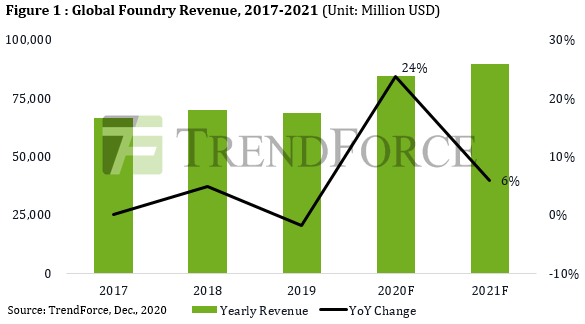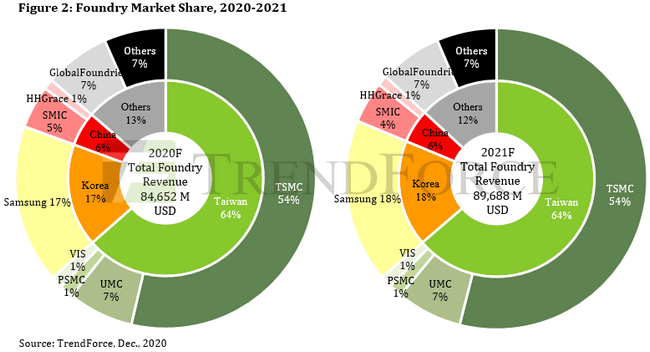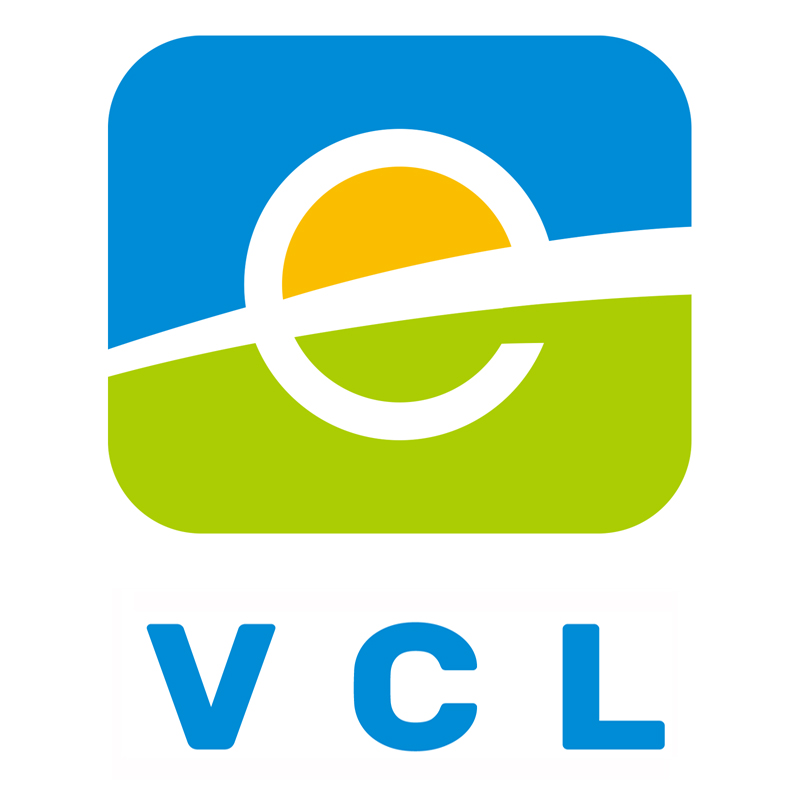2020 Global Foundry Up 23.7%
2020 foundry revenue is forecast at $84.6 billion, says TrendForce, with the 23.7% increase over 2019 being the highest y-o-y growth in nearly 10 years.

TrendForce has made the following three assumptions regarding foundry demand in 2021:
First, pandemic-induced demand for networking products and from the stay-at-home economy will persist somewhat due to uncertainties in the vaccine’s efficacy and side effects.
Second, the China-U.S. trade war will remain unresolved.
Finally, the global economy will recover in 2021 after the yearlong downturn in 2020.
The demand for components will likely rise thanks to not only a forecasted 2-9% growth in the smartphone, server, notebook computer, TV, and automobile markets next year, but also the continued rollout of next-generation networks, including 5G base stations and WiFi 6 technologies.
Therefore, the foundry industry is expected to reach record revenues by growing 6% YoY in 2021.
TSMC’s capacity utilization rate for advanced processes 5nm and below is about 90%, as U.S. sanctions barred Huawei subsidiary HiSilicon from ordering wafer starts, while 5nm wafer starts from Apple, which is TSMC’s primary client at the 5nm node, are unable to fully make up for the absence of HiSilicon.
TSMC’s 7nm node and Samsung’s 7/5nm nodes are seeing high demand from AMD/MediaTek and Nvidia/Qualcomm, respectively, in turn ensuring nearly fully loaded capacities at these nodes, likely to persist through 2Q20.
Looking ahead from 2H21 to 2022, both TSMC and Samsung have made plans to aggressively expand their 5nm capacities in response to their HPC clients’ high demand for components in 2022.

Although wafer starts for most of these clients will generally ramp up from late-2021 to 2022, meaning the two foundries’ capacity utilization rates for the 5nm process may take a slight dip in 2H21, TrendForce believes that production capacities for advanced processes will once again be in severe shortage in 2022 given the rapid growth of the HPC market and the increased orders from Intel, which is accelerating the outsourcing of its production.
OEMs have been aggressive procuring components used in various end-products, including CIS, TDDI, RF front-end, TV chip, WiFi, Bluetooth, and TWS components.
The other key factor influencing the shift in production capacities across the foundry industry is U.S. sanctions against SMIC.
TrendForce indicates that Broadcom and Qualcomm are SMIC’s major clients from the U.S. Since the news broke on September 10 that the U.S. government was planning to put SMIC on the Entity List, both Broadcom and Qualcomm have been reassigning orders that are originally going to SMIC to other foundries outside China.
Also, GigaDevice, which is SMIC’s client in the domestic market, has modified the allocation of its wafer input so that the majority of its products will instead be manufactured by HHGrace.
The US DoC is now requiring US suppliers to obtain a special license in order to ship their products to the Chinese foundry and has adopted “presumption of denial” in reviewing the license application for the equipment used in fabrication processes that are 10nm and below.
Chinese equipment suppliers can only support nodes down to the 90nm but not beyond.
Furthermore, the chance of China’s semiconductor industry achieving self-sufficiency for all the equipment deployed in a wafer production line is extremely slim in the short term.











